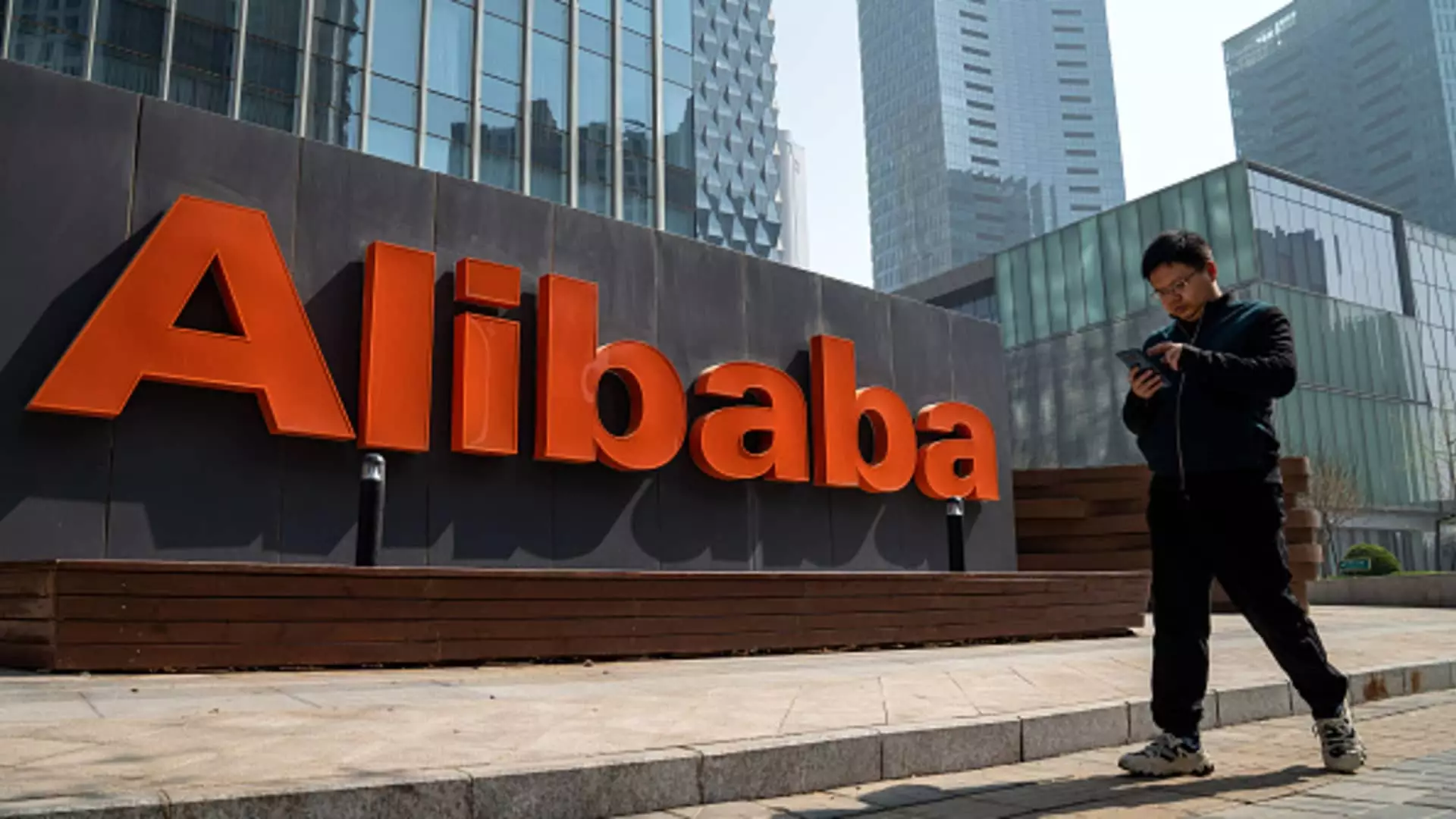Alibaba Group Holding Ltd., often hailed as the titan of Chinese e-commerce, recently reported its third-quarter earnings, revealing a complicated picture of both success and hurdles. For the quarter that ended on September 30, 2023, the company surpassed net profit expectations significantly, yet its revenue growth missed the mark, primarily attributed to the ongoing deceleration in consumer spending within the world’s second-largest economy.
In a remarkable display of resilience, Alibaba announced a year-on-year net income increase of 58%, amounting to 43.9 billion Chinese yuan (approximately $6.07 billion). This surge was largely driven by favorable adjustments in its equity investments, a decrease in impairment charges concerning those investments, and enhanced operational income. However, while the profit increase was impressive, it overshadowed the revenue numbers, which came in at 236.5 billion yuan. This figure represents a modest 5% increase from the same period last year but fell short of analyst expectations set at 238.9 billion yuan, according to insights from LSEG.
The disparity in profit and revenue has raised eyebrows among investors, prompting questions about the underlying strengths and weaknesses within Alibaba’s core business segments. Investors greeted the news with a cautious optimism, as evidenced by the stock price’s nearly 17% increase year-to-date, climbing an additional 3% in premarket trading immediately following the earnings announcement.
Against the backdrop of a sluggish retail environment characterized by cautious consumer spending, Alibaba’s primary business units—Taobao and Tmall Group—reported a mere 1% uptick in revenue, totaling 98.99 billion yuan during the quarter. The external economic environment is challenging, as evidenced by rival JD.com’s similar revenue shortfall. Industry experts suggest that the Chinese government’s recent economic stimulus measures, including a staggering 1.4 trillion yuan package, may provide a lifeline for retail activities, but the efficacy of these measures remains to be seen.
Consumer sentiment, however, may be gradually improving, with recent figures indicating a surprising 4.8% rise in year-on-year sales in October. Additionally, this year’s Singles’ Day shopping event—often considered a barometer for national consumer sentiment—seemed to show signs of recovery after previous sluggish performances. Alibaba reported “robust growth” metrics during this significant shopping festival, including an elevated gross merchandise volume and a striking increase in active buyers.
While Alibaba navigates challenges in its core e-commerce business, its cloud computing sector has shown promising signs of growth. The Cloud Intelligence Group reported year-on-year sales growth of 7% to reach 27.65 billion yuan during the September quarter. This performance marks a slight acceleration from the previous quarter’s 6% growth rate. Alibaba’s commitment to cloud innovation is evident, particularly as it positions itself to capitalize on the burgeoning artificial intelligence (AI) market.
Eddie Wu, CEO of Alibaba, expressed confidence in the company’s core businesses and reiterated its intention to continue investing in long-term growth. He highlighted that the segments related to AI and public cloud products are experiencing double-digit growth, with revenues from AI-related products achieving triple-digit growth. This ambitious pursuit is not merely an attempt to bolster current revenue; it represents a strategic pivot aimed at establishing Alibaba firmly in the competitive AI market, both domestically and internationally.
Amid Beijing’s regulatory uncertainties following a crackdown on the tech industry, Alibaba is actively restructuring its business operations. The company has revamped its cloud division’s leadership and is working to position itself competitively against domestic rivals like Baidu and Huawei, as well as international competitors such as Microsoft and OpenAI.
The outlook for Alibaba is intricately linked with the broader trajectory of the Chinese economy and its evolving regulatory landscape. As analysts point out, the company’s future performances will likely be reflective of consumer behavior, influenced significantly by government policies and market dynamics. Moving forward, the effectiveness of recent stimulus measures, including the resurgence of consumer sentiment, will be crucial for Alibaba’s performance.
While Alibaba’s ability to generate profit amid revenue challenges illustrates its resilience, the path forward will require strategic focus and innovation, particularly in leveraging its cloud computing and AI capabilities. As the company adapts to current market realities and invests in burgeoning sectors, investor sentiment remains cautiously optimistic, observing closely how these maneuvers will play out in a dynamic economic environment.

